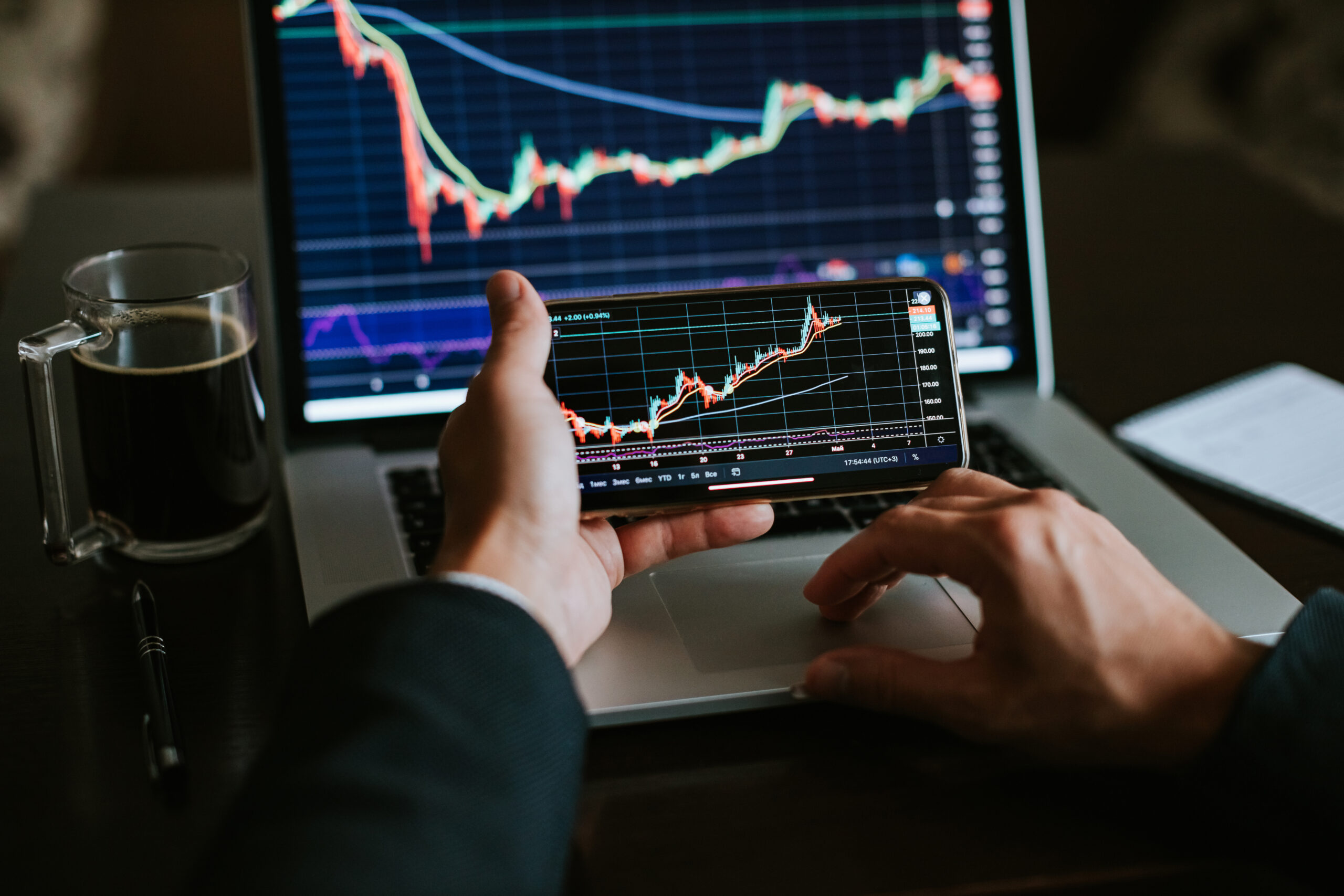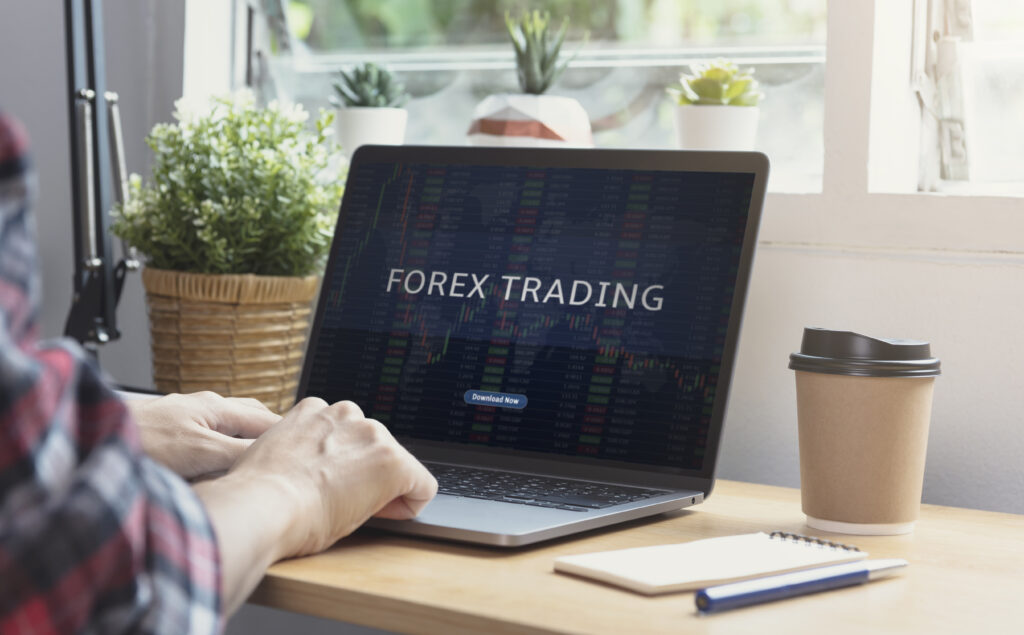
Introduction to Automated Trading In Forex
In the past, trading in the Forex markets was a complex endeavor that often required a deep understanding of the market and a constant eye on the multiple factors that could affect currency value. With the advent of technology, however, a new player has entered the field, transforming the landscape: automated trading in Forex. This innovation has not only democratized Forex trading but has also made it more accessible, efficient, and in many cases, more profitable.
The emergence of automated trading in Forex has been a game-changer, revolutionizing how traders approach the market. Gone are the days when Forex trading was confined to Wall Street or high-net-worth individuals; now, even individuals with modest initial investments can dive into the world of Forex, thanks to automation. Automation in Forex trading has leveled the playing field, allowing novices to access tools and strategies that were once only accessible to seasoned traders.
Automated trading in Forex isn’t just a technological fad; it’s a paradigm shift. By leveraging advanced algorithms, traders can make quick, consistent decisions devoid of emotional interference. Moreover, automated trading allows for robust risk management in Forex, making it a preferred choice for many.
But it’s not all rosy; automation comes with its own set of challenges and risks. From choosing the right automated trading system to understanding its impact on your trading style, there’s a lot to consider. Therefore, this guide aims to offer a comprehensive overview of automated trading in Forex. We will delve deep into its mechanisms, explore the pros and cons, introduce you to popular automated trading software, and guide you through the crucial steps to choose the best automated system for your trading needs.
In this guide, you will also find actionable tips and insights that aim to help you make informed decisions. Whether you’re a beginner in the world of Forex trading or an experienced trader looking to optimize your strategies, this guide is designed to be your go-to resource for automated trading in Forex.
What is Automated Trading?
Automated trading is a method of executing trades using computer programs that follow a predefined set of rules or criteria. Unlike traditional trading, where human decision-making and intervention are necessary, automated trading in Forex allows for a hands-off approach. This is achieved by setting up algorithms that are designed to scan the market for specific conditions and execute trades when those conditions are met.
Components of Automated Trading Systems
An automated trading system consists of several components, including a trading strategy, an algorithm, a risk management protocol, and an execution platform. The strategy is the foundation and specifies what the algorithm should look for. This could range from simple moving averages to more complex trading patterns or even news-based triggers.
Freedom and Flexibility
One of the most significant advantages of automated trading in Forex is the freedom it offers. Traders can go about their day, focus on other tasks, or even sleep while the trading system does the work. This is especially advantageous in the Forex market, which operates 24/5, allowing traders to take advantage of trading opportunities even when they are unavailable.
Automation and Forex Trading Strategies
When it comes to Forex trading strategies, automated systems offer unmatched precision and consistency. For instance, if you have a strategy that relies on utilizing a set of indicators like RSI, MACD, and moving averages, an automated system can be programmed to execute trades whenever those indicators align in a particular way. This eliminates the chance of human error and ensures that the strategy is applied consistently.
Types of Automated Trading
Automated trading in Forex is not monolithic; it can be categorized into different types based on the degree of human intervention required. Some systems are fully automated, requiring minimal to no human oversight, while others are semi-automated, requiring traders to approve trades before execution. Each has its merits and drawbacks, and choosing the right type often depends on the trader’s comfort level and experience.
Algorithmic Trading vs. Automated Trading
It’s worth noting that while all algorithmic trading is automated, not all automated trading involves algorithms. Algorithmic trading uses mathematical formulas to predict price movements and execute trades. In contrast, automated trading in Forex might use simpler conditions for trading, such as buying a particular currency when its value drops to a predetermined level.
Pros and Cons of Automated Trading
Automated trading in Forex is a double-edged sword. While it has considerably streamlined the trading process and opened up new avenues for profit, it has also introduced specific risks and challenges that traders must be aware of.
The Positive Impact of Automated Trading
Quick Decision-Making
One of the most significant benefits of automated trading in Forex is the speed at which trades can be executed. The algorithms can process vast amounts of data in milliseconds and make quick decisions, which is virtually impossible for a human to match.
Elimination of Emotional Factors
Automated systems act based on logic and data, thereby eliminating emotional factors such as fear and greed that can adversely affect trading decisions. This is particularly beneficial in the volatile Forex market, where quick emotional decisions can lead to substantial losses.
Back-Testing Capabilities
Before deploying an automated trading system, traders can back-test their strategies using historical data. This gives them a clearer understanding of how effective a strategy could be and helps fine-tune the algorithms, thus positively impacting automated trading.
Risks and Drawbacks
System Failures
Technology is not foolproof. System glitches, server downtimes, or even simple connectivity issues can result in missed trades or, worse, unintended positions. Any of these can significantly impact the performance of an automated trading system.
Over-reliance on Technology
Automated trading in Forex can sometimes lead to an over-reliance on technology, with traders potentially overlooking market changes that algorithms might not be programmed to understand. This could result in losses, particularly in situations requiring nuanced human judgment.
Lack of Understanding
Using a ‘black box’ system where the trader has little understanding of the algorithms operating behind the scenes can be risky. If you don’t comprehend how the system makes decisions, you may find yourself at a loss when things go awry.
Revolutionizing Forex Markets but Not Always for the Better
While automation is revolutionizing Forex markets, it’s not always in ways that benefit every trader. For example, high-frequency trading (HFT) algorithms can cause market distortions and make it challenging for individual traders to compete.
Popular Automated Trading Software
Choosing the right automated trading software is a crucial step in setting up your Forex trading venture for success. The right platform not only facilitates ease of trading but also offers robust functionalities that can be customized to fit your specific needs. Below are some of the most popular platforms for automated trading in Forex, each with its unique set of features.
MetaTrader 4 and 5 Platforms
These are among the most popular platforms for Forex traders, supporting a wide range of automated trading options. Both platforms are user-friendly and offer comprehensive charting tools, indicators, and a plethora of Forex trading strategies. While MetaTrader 4 is known for its simplicity and effectiveness, MetaTrader 5 offers additional features such as more timeframes, more order types, and a broader range of technical indicators.
MetaTrader 4: A Closer Look
MetaTrader 4 is highly favored for its user-friendly interface and robust functionality. It has an intuitive scripting language, MQL4, that allows traders to create custom indicators and automated trading scripts. The platform supports various types of orders, including market, pending, and stop orders, providing traders with the flexibility to execute different trading strategies.
MetaTrader 5: The Advanced Option
MetaTrader 5, the successor to MT4, provides more features geared towards the professional trader. These include an economic calendar, more charting tools, and even support for trading stocks and commodities, in addition to Forex. Its scripting language, MQL5, is more advanced and allows for more complex algorithms and strategies to be implemented.
NinjaTrader
NinjaTrader is another powerful platform that caters to traders who want advanced charting tools and automated trading capabilities. It supports both discretionary and automated trading and provides a rich set of features, including market analytics, trade simulation, and custom indicators. While not as widely used as MetaTrader, it’s a platform that offers excellent customization options and is particularly favored by advanced traders.
cTrader
cTrader is known for its intuitive interface and sophisticated charting tools, making it a strong competitor to MetaTrader platforms. It allows for algorithmic trading through its cAlgo feature, facilitating back-testing and the execution of complex strategies. It also boasts features like Level II pricing and detachable charts, adding to its appeal.
TradingView
While traditionally not a standalone trading platform, TradingView has introduced broker integration and allows traders to execute trades directly from their charts. The platform is highly customizable and supports Pine Script, a programming language that lets traders create custom indicators and strategies for automated trading.
How to Choose an Automated Trading System
Navigating the labyrinth of automated trading systems can be daunting. With a plethora of options available, each claiming to be the best, how do you make an informed decision? The key is to align the system with your trading objectives, your level of expertise, and your risk tolerance. Below are some pivotal factors to consider when selecting an automated trading system.
Assess Your Needs and Goals
Before even looking at various systems, you need to have a clear understanding of what you want to achieve through automated trading in Forex. Are you looking to implement long-term trading strategies, or are you more inclined towards day trading? Knowing your goals will help you narrow down your options.
Reliability and Track Record
Once you have a shortlist of systems, delve into their track records. Look for systems that have demonstrated consistent profitability and are reliable. Check for reviews and testimonials from other users. Remember that the past performance of a system doesn’t guarantee future success, but it can provide insights into its reliability.
Ease of Use
If you’re new to automated trading, you’ll want a system that’s user-friendly. Platforms like MetaTrader 4 and 5 platforms are often recommended for beginners due to their intuitive interfaces. However, if you’re an experienced trader looking for more advanced features, platforms like NinjaTrader or cTrader might be more suitable.
Compatibility with Your Trading Style
Different systems cater to different trading styles. Some are better suited for scalping, while others are optimized for long-term strategies. Choose a system that aligns with your trading style and the Forex trading strategies you intend to use.
Risk Management in Forex
An often-overlooked but vital aspect is how the system handles risk management. Does it allow you to set stop-loss and take-profit levels? Does it offer features to mitigate losses in volatile markets? Effective risk management in Forex is crucial, so ensure your chosen system allows you to protect your investment adequately.
Cost
While some platforms offer free trials or freemium models, others might charge a one-time fee or a monthly subscription. Evaluate the cost against the features provided to ensure you’re getting value for your money.
Test the Waters with a Demo Account
Most reputable platforms will offer a demo account feature, allowing you to test their system without risking real money. Use this opportunity to evaluate how well the system aligns with your needs, and how effectively it can execute your trading strategies.
Consult a Community
Lastly, don’t underestimate the power of community wisdom. Online forums, social media groups, and expert reviews can provide invaluable insights that can help you make a more informed decision.
By taking the time to consider each of these factors carefully, you’ll be better positioned to choose an automated trading system that not only meets your needs but also maximizes your potential for success in Forex trading.
Conclusion
Automated trading in Forex has indeed been a game-changer, transforming traditional trading paradigms and redefining what’s possible in the Forex markets. This technological leap has democratized trading by providing tools previously available only to institutional traders, making Forex more accessible to individual traders than ever before. As with any technology, automation in Forex trading is a double-edged sword. It offers substantial advantages, such as speed, efficiency, and the elimination of emotional trading decisions. However, it also introduces its set of challenges and risks, including technological glitches and a potential disconnect from fundamental market changes. Therefore, it’s crucial for traders to understand both the bright and dark sides of automation.
Platforms like MetaTrader 4 and 5, NinjaTrader, and cTrader have been instrumental in revolutionizing Forex markets. They offer a suite of powerful tools for algorithmic trading, risk management in Forex, and the execution of complex Forex trading strategies. The right platform can act as your trading cockpit, providing all the controls, data, and tools you need to navigate the Forex markets successfully. Perhaps the most important takeaway from this guide is the importance of making an informed decision when choosing an automated trading system. It’s not merely about what the system can do; it’s about what it can do for you. Assess your needs, scrutinize the system’s features, and be keen on its risk management options to ensure you’re making a choice that aligns with your trading goals.
As we move forward, automation will continue to play an ever-larger role in Forex trading. As algorithms become more sophisticated and as artificial intelligence becomes more integrated into trading systems, the capabilities of automated systems will expand, opening up new opportunities and challenges alike.
FAQs
What is the role of MetaTrader 4 and 5 platforms in automated trading? MetaTrader 4 and 5 are popular platforms for Forex trading automation. They offer various tools for analysis, strategy execution, and risk management in Forex.
Can automated trading systems execute multiple Forex trading strategies? Yes, advanced automated systems can handle various Forex trading strategies simultaneously, which contributes to their capability to revolutionize Forex markets.
Is risk management in Forex different when using automated trading systems? Risk management in Forex is a critical aspect, whether you are trading manually or using an automated system. However, automated systems can be programmed to adhere to specific risk management rules, making it potentially more reliable.
How does automated trading differ from algorithmic trading? While both are forms of automated trading, algorithmic trading is more specialized and uses complex algorithms to execute trades. Automated trading in Forex could be as simple as using basic indicators.
Do automated trading systems work 24/7? Most automated systems can operate 24/7, but it’s crucial to consider server downtimes and potential system errors that could affect trading.

